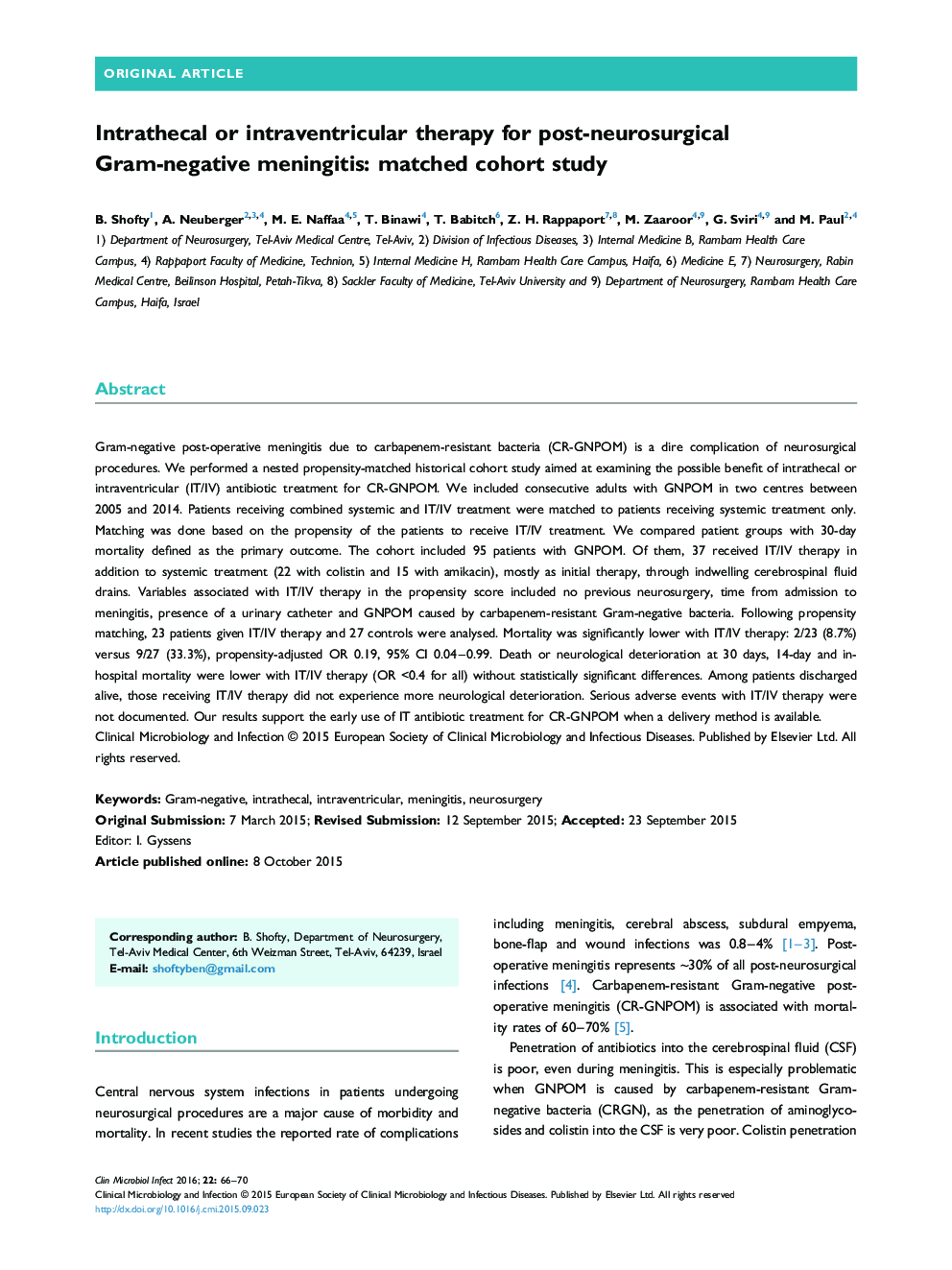| Article ID | Journal | Published Year | Pages | File Type |
|---|---|---|---|---|
| 6129101 | Clinical Microbiology and Infection | 2016 | 5 Pages |
Abstract
Gram-negative post-operative meningitis due to carbapenem-resistant bacteria (CR-GNPOM) is a dire complication of neurosurgical procedures. We performed a nested propensity-matched historical cohort study aimed at examining the possible benefit of intrathecal or intraventricular (IT/IV) antibiotic treatment for CR-GNPOM. We included consecutive adults with GNPOM in two centres between 2005 and 2014. Patients receiving combined systemic and IT/IV treatment were matched to patients receiving systemic treatment only. Matching was done based on the propensity of the patients to receive IT/IV treatment. We compared patient groups with 30-day mortality defined as the primary outcome. The cohort included 95 patients with GNPOM. Of them, 37 received IT/IV therapy in addition to systemic treatment (22 with colistin and 15 with amikacin), mostly as initial therapy, through indwelling cerebrospinal fluid drains. Variables associated with IT/IV therapy in the propensity score included no previous neurosurgery, time from admission to meningitis, presence of a urinary catheter and GNPOM caused by carbapenem-resistant Gram-negative bacteria. Following propensity matching, 23 patients given IT/IV therapy and 27 controls were analysed. Mortality was significantly lower with IT/IV therapy: 2/23 (8.7%) versus 9/27 (33.3%), propensity-adjusted OR 0.19, 95% CI 0.04-0.99. Death or neurological deterioration at 30 days, 14-day and in-hospital mortality were lower with IT/IV therapy (OR <0.4 for all) without statistically significant differences. Among patients discharged alive, those receiving IT/IV therapy did not experience more neurological deterioration. Serious adverse events with IT/IV therapy were not documented. Our results support the early use of IT antibiotic treatment for CR-GNPOM when a delivery method is available.
Related Topics
Life Sciences
Immunology and Microbiology
Microbiology
Authors
B. Shofty, A. Neuberger, M.E. Naffaa, T. Binawi, T. Babitch, Z.H. Rappaport, M. Zaaroor, G. Sviri, M. Paul,
